Writing women in history
The brief is to celebrate women who has previously gone unrecognised for her role in the worlds of art, music, science, industry, technology, or any aspect of culture.
Possible routes in response to the brief; publication, boutique magazine, posters, base it on heritage, African woman, perhaps introduce fashion.
Research
Factual Notes about Migration
The investigation into Migration:
Reading into books taken from the library, woman rights in migration, the book explores migration in the Middle East.
Iran
(political asylum)- The protection granted by a state to someone who has eft their home country as a political refugee.
Iranians has been a constant in Dutch asylum law, at least since the 1979 revolution in Iran and the beginning of the war with Iraq in 1980s.
30,000 Iranians live in the Neverlands, arrived as a direct result of the 1979 revolution. Some 30% of all the asylum applicantions of Iranians in Europe between 1992 and 1994 were lodged in the Neverlands. Women form about 1/3 of Iranian asylum applicants in the Netherlands.
*Up until January 1995, Iranian asylum applicants were granted some form of residence.
*Explicit guidelines for the making of decisions in individual Iranian cases were only published in 1996.
*Refugee status is granted through refugee applicants.
*The recognition rate for Iranians has varied from 5% in 1989 to around 40% in 1992; the advantage of women over men varies from 0% to 6%.
*Only one woman was granted refugee status, this concerned an applicant with parents who had worked for the Shah's secret service and were executed in the 1980s. A comparable story for a widow from Iran was dismissed although she was given a toleration permit.
Feminisation of migration
The treatment of women in Asylum procedures
*claimed that women are discriminated against in the asylum procedures of Western countries.
Iran and Iraq war
The Iran and Iraq war was armed conflict between Iran and Iraq lasting from 22 September 1980, , when Iraq invaded Iran to 20 August 1988.
*Iraq Desire to replace Iran as a dominant Persian Gulf state.
*Although Iraq hoped to take advantage of Iran's revolutionary chaos and attacked without formal warning, it made only limited progress into Iran and was quickly repelled; Iran regained virtually all lost territory by June 1982, For the next six years, Iran was an offensive.
The Guardian- Dina Nayeri
An article which explores her experience migrating from Iran to the US. She dealt with racism, social friction and questioning her identity. She explains how both cultures have helped strengthen her individuality.
National Geographic 'Afgan girl'
Afghan girl is a 1984 photographic portrait by journalist Steve McCurry which appeared on the June 1985 cover of the National Geographic. Image of a adolescent girl with green eyes in a red scarf looking intensely at the camera. It has been compared to the Leonardo da Vinci's painting of the Mona Lisa.
In early 2002, identified as Sharbat. Gula (born 1972) also known as Sharbat Bibi, an Afghan woman who was living in the Nasir Bagh refugee camp in Pakistan during the time of the Soviet occupation of Afghanistan when she was photographed.
Orphaned at the age of six during the Soviet invasion of Afghanistan, she had trekked by foot to Pakistan with her siblings and grandmother.
She has become a symbol of a return to Afghanistan that hundreds of thousands of refugees are undertaking after decades away.
What to explore?
*Collect the Guardian and the National Geographic- research collect stories.
*Migration around Eastern countries.
*Visual identity- explore Western- Eastern woman focus on the social aspect.
*Explore coloured women- interview theme how they feel fitting into society.
-Migration change
Publication could be called 'grateful'
themes: East meets West
*Explore culture
*political aspect
*Research into Middle Eastern poetry- to relate to this sensitivity.
Brief title: Rawiya (She who tells a story)
Brief:
Aim:
Modern
interpretation about ethnic woman. It will explore cultural heritage, to
initiate respect from the background of migration.
Explore
the success, and talents of individuals, but also explore identity and
originality.
Show a prideful purpose towards the publication.
Concept/Proposition:
*East meets West
*Focus is on culture.
*Exploring history of migration,
how today’s society is multi-cultural.
*Explore personal experiences.
*Fashion Editorial
*Portrait Photography
*Experiences/ Documentation
Background
*Exploring Migration through Eastern countries.
*Investigating into wars that occurred in the Eastern Culture
*Context of Royalty of kings, how woman is perceived in a
stereotypical way- exploring the reason.
*The history of Eastern Countries
*Location of the countries- through visual formats
*Issues- Social friction, racism ect.
Target Market
People who can relate to social friction,
the idea of fitting into society. People who are open to cultures as well as
narrow minded people to open their mind into societies issues. The publication
aims to create a more open-minded attitude to reduce more serious issues such
as bullying, racism.
People who feel disconnected from their
cultural heritage.
The
issues are sensitive which a wider audience from different backgrounds, can
interact and learn from.
The
purpose of this is to feel closer to your cultural heritage.
People
who find their family values confusing.
Tone of Voice
Sensative, serious, expressive, brave, Fashion editorial based,
Colourful, relating to the idea of culture.
Considerations
*Binding qualities- as
it is a mini publication which bind would be appropriate
*Order of the content
*prototypes
*Colour Scheme
*Appropriate typefaceMandatory Requirements
All photographs must be stated from the artist on the credit page.
Deliverables: A publication based on the concept of East meets West
Concept explanation
To
create a publication that represents woman from the Middle East and North
Africa, or woman of colour. A magazine which is knowledgeable and understanding
of the Islamic faith, Arab and African culture. It is an honest reflection of
the young woman.
Feminism
is a key theme, alongside identity. The concept of fitting into society, how we
feel we fit in between when in fact we should celebrate our nationality.
Explore the issue of
social friction of how ethnic woman feel they are being perceived into a new
society, this could be perhaps being through sexualism.
Action Plan
What is the problem?
1. Social friction
2.Culture barrier
3. There is not enough recognition of coloured woman
4.Stereotypical perception of culture
5.Racism
We intend to educate and inform but also connect people with their cultural heritage.
Specific Audience
People who have experienced racism, also who feel disconnected with their culture.
Purpose
The purpose is to feel closer to your cultural heritage. To show a prideful purpose towards the publications.
In order to achieve this we will produce a publication based on the East meet West. The focus will be on culture, Islamic faith, Arab, and African woman. It is an honest reflection of a young woman.
The publication will explore:
* history of migration,
* how today’s society is multi-cultural.
*Explore personal experiences.
*Fashion Editorial
*Portrait Photography
*Experiences/ Documentation
This will be produced using Binding techniques, photography- to gather content, and secondary research.
Contract
Research
Contextual research
Azeema Magazine
Azeema magazine is an independent magazine exploring strength within Middle Eastern/ North African women and women of colour. Founding Editor: Jameela Elfaki, Deputy Editor: noor palette, Associate Editor & Social Media Manager: Sunayah
Jameela Elfaki wanted to create a publication which empowers coloured woman as in media there is little recognition of this culture. The publication is controversial as it explores the theme of rebellion, the publication is not meant to offend.
To help develop my work further, I will gather the content to look at concepts explored in the magazine. This will help structure my final publication.
Themes explores are sexualism, feminism, and rebellion.
Secondary Research
Research into Saudi Arabian Royalty. Researching into injustice, finding a role model to focus the publication on.
Princesses of the Middle East
‘They are hanging to life’ – Al Fayez speaks out
“The injustices that we see are terrible, and someone must
say something.” Al Fayez
The former wife of King Abdullah of Saudi Arabia, Al Fayez
claims her four daughters have suffered years trapped in the royal compound in
Jeddah.
Al Fayez has gone public and claims years of abuse against
their four daughters. The house of Saud is a secretive dynasty, which has held
absolute power of more than 80 years.
Princess Alanoud Al Fayez was married to King Abdullah at
the age of 15. It was a marriage arranged by her uncle, and she never laid eyes
on him until their wedding day. They had four daughters, princess Sahar, Maha,
Hala and Jawaher, but no son. Due to Al Fayez not conceiving a boy, King
Abdullah demanded a divorce.
The girls led a privileged childhood- skiing trips in the
Alps, visits abroad. But after the divorce, things deteriorated and she
eventually fled to London.
“Leaving
my daughters was very difficult, but I never thought they’d be subjected to
this,” she says. “After all, they are [the king’s] daughters too.”
For the last 13 years, the daughters have been trapped in
the royal compound in Jeddah. They cannot leave without armed guards and are
barred from leaving the country.
“They are really in a terrible state, especially Jawaher and Sahar.
She’s telling me, ‘Mummy, we are trying to hold on to our sanity’. They are
hanging to life. They don’t deserve what happened to them.”
Al Fayez have been communicating with the eldest daughter,
Princess Sahar through email. She says their villa is no gilded cage, but a
house is slipping into ruin, with leaking pipes and shattered windows: “People
don’t realise how hard our situation is. They still see us as ‘pampered’ Saudi
Princesses. We never were. We suffer on a daily basis.”
Princess Sahar spoke out after being threatened by her
father- the king, Sahar writes: ‘Our father said that we had no way out and
that after his death our brothers will continue detaining us.”
Sahar goes on to say, “Women and children (in Saudi Arabia)
are abused, while their male guardian enjoys privileges granted by the court in
cases of domestic abuse. Princes and the elite entourage are protected and the
victims and their families suffer injustice.”
In the meantime, in London, Al Fayez has tried everything to
get her daughters released. Her lawyers have asked to visit the princesses in
Saudi and have gone to the UN’s special rapporteur on human rights.
Princess Hala is suffering from extreme anorexia and
psychological problems. She claims she was jailed after she got a job in a
local hospital and spoke up about human rights abuses.
“My
daughters want the right to see their mother, and I want to see my daughters,”
Al Fayez says. “They are just trying to hold on to their sanity.
“They
are suffering . . . with no hope for salvation.”
A family picture of the family
Photographs sent to Al Fayez of her children today.
Princess Fawzia of Egypt
In 1939, Princess Fawzia of Egypt married the Prince of
Iran, Mohammed Reza, as a couple they united two Muslim lands. Each side had
political and personal motives, for welcoming the union: for the Egyptian King
Farouk, the princess’ brother, the marriage declared a constitutional monarch
power by the British. During the wedding ceremony in Cairo, guests received
bonbon boxes made of gold and precious stones; flower-filled floats paraded
down the wide avenues; fireworks were set off over the Nile.
The princess grew up in a sophisticated, exclusive Cairo
speaking French, English and Arabic. Princess Fawzia was photographed for the
cover of Life magazine. Her life was documented through newspapers worldwide,
where she was renowned as the most beautiful woman.
When the crown Prince became Sha, Fawzia became the empress
of Iran; their daughter was Princess Shahnaz. Rumours occurred of Fawzia being
unhappy with her marriage. A member of the Egyptian court was sent to Tehran,
where he discovered Fawzia to be neglected and ill. Due to her illness, King
Farouk demanded for a divorce. Princess Shanaz stayed in Iran.
In time, Fawzia remarried in 1949, to royalist officer named
Ismail Cherine, where they had two children. The couple, who were poor and
disenfranchised, had by then turned against the royal family.
King Farouk was viewed as a corrupt and incompetent playboy.
In 1952, a military coup led by Col. Gamal Abdel Nasser was widely heralded
among Egyptians as an act of emancipation. Farouk sailed out to Italy and never
returned to the throne.
Fawzia stayed in Egypt with her family; they settled in a
villa in Alexandria, where she lived a harmonious life.
In 1976, President Anwar Sadat, invited Princess Shahnaz and
her family to be guests at a royal palace in Alexandria. One day, they visited
Fawzia in her villa. As they were leaving, Queen Fawzia remarked, ‘Of course
because you called on me, I should call on you in return.” Princess Shahnaz was
surprised, the palace they were staying in belonged to Fawzia, she had not been
there for 24 years.
People embraced the Princess visiting the palace. Fawzia
took the Princess to the coronation hall. The hall included versus from the
Quran written on the walls. “I’m afraid my brother did not read all the versus,
if he did we would all be ruling royals… here.” She added, “Twice in my life, I
lost the crown. Once I was the queen of Iran, and once I was the princess here…
All gone now, and it doesn’t matter!”
In a century, Fawzia transformed from a queen to a mere
shadow. In the uncertain days of early July, Princess Fawzia of Egypt passed
away in Alexandria and was buried in Cairo.
When you visit the tombs of Kings and queens, you see they leave
everything behind, she said the day she led her visitors through her old
palace, even the crowns.
Images of Princess Fawzia
Pictures of Fawzia and Mohammed Reza and their child together
A picture of Alexandria in Egypt in 1970s.
Princess Niloufer
Princess Niloufer, born on January 4, 1916 in Goztepe Palace
in Istanbul, was one of the last princesses of the Ottoman Empire. Her early
life was marked by the war and exile. At the end of WW1, the Ottomans were
deposed and eventually in 1924, were forced for exile in France. At the age of
16, she was married to Moazzim Jah of Hyderabad.
Princess Niloufer carried out responsibilities such as
charity works, and spent much of her time building a medical facility in
Hyderabad and incentivising foreign doctors to relocate there.
After remaining childless throughout her marriage, Princess
Niloufer and Moazzim Jah filed for divorce. Therefore, she returned to France,
where she eventually married a British diplomat. Princess Niloufer sadly passed
away on June 12, 1989.
Queen Rania
The Palestinian beauty has become a progressive female voice
in the Arab world. Queen Rania has develop education and public health, for the
development of a sustainable tourism industry in Jordan, for youth empowerment,
and is a champion for cross-cultural dialogue between the West and the East.
Sheika Mozah
Sheika Mozah is a Middle- eastern monarch. Sheikha Mozah
pioneers at women, children, education, and human rights.
Mozah is a mother of seven, and is the chairperson for the
Qatar Foundation for Education, Science, and Community Development. Mozah has
also worked with stopping the spreads of extremism among youth.
Images exploring Middle- Eastern fashion in royalty.
The secret
diary of the Saudi princess who would be stoned to death if she returned home
The
princess fears she and her daughter would be killed if they returned to Jeddah,
where the man she was forced to marry lives.
The
judge’s decision to grant her asylum in Britain, she had previously been turned
down, only came to light in July. The princess expresses how she fears being
hunted across London by both her husband and her father. Consequently, she
expresses her distrust of the British Government and concern that officials
might betray her whereabouts.
“I feared
the Home Office would give my details to my husband and my life would be in
immediate danger,”
“I am
aware that Saudi Arabia is an important business partner of the UK. I am also
aware of the power of my husband’s family and also my father in such business
dealings.”
“I was
very concerned that my situation could become compromised.”
The Saudi
Princess had an Islamic education at first, then was sent to a Western school,
however taken out after two years when it was decided she would marry a senior
member of the Saudi Royal family.
“The
marriage was arranged by my father, who is a close friend to the royal family,
and my marriage was a symbol of their friendship- I was a gift.
“The
marriage was never consummated and I remained a virgin. Due to his age, his
medical conditions and the wishes of his other wives, my husband rarely slept
in the same room as me.”
It was a
trip to Harrods where she was shopping with her made, where she met the man who
would father her daughter.
The
princess learned of her pregnancy only when she suffered morning sickness and
at first confided in only her personal servants. She confessed to her mother,
where to this day, the mother secretly funds the princess’s life in London with
money sent by Western Union.
‘I wanted to have an abortion so that I could continue to lead a normal
life with my family, but this was not possible in Saudi Arabia,’ recalls the
princess.
'However, she was able to hide her pregnancy by wearing a loose-fitting
head-to-toe abaya cloak.
‘I also wore the abaya while sleeping at night,’ she says. ‘This is
common practice for Saudi women.
‘As my husband and I never slept together, it was easy to hide my growing
body from him. In addition, my bump was very small and I didn’t gain much
excess weight.’
As the pregnancy neared full-term, the princess convinced her husband once again that she needed to visit Britain for medical reasons.
It was during this stay that she gave birth to her child in a London
hospital.
To this day the princess has used fake identifications and is currently moving from one place to another.
Collecting this research explores the injustices and will create recognition of the issues with woman that is occurring in the Middle-East. Hopefully creating this recognition the Western society and help these woman which are suffering. It is about spreading the word, and being aware of these serious issues which are occurring.
Creating a concept for Primary Research based on marriage and reflecting these Princesses
The Photographs will include the concept of the rose to signify and symbolise how woman are perceived objectively.
Meaning and Symbolism
of Roses
Long a Symbol of love
and passion, the ancient Greeks and Romans associated roses with Aphrodite and
Venus, goddesses of Love. Used for hundreds of years to convey messages without
word, they also represent confidentiality. In fact, the Latin expression “sub
rosa” means “under the rose”, this concept means told in secret, and in ancient
Rome, a wild rose was placed on the door to a room where confidential matters
were being discussed.
Each colour offers a
distinct meaning: red, the lover’s rose, signifies enduring passion; white,
humility and innocence; yellow, expressing friendship and joy; pink, gratitude,
appreciation and admiration; orange, enthusiasm and desire; white lilac and
purple roses represent enchantment and love at first sight. The Number of stems
in a rose bouquet can also express specific sentiments.
Primary Research- Collaboration with Remie Dominique- Fashion photography
Breaking up Photography, photographing the object of the rose to break up the portrait images. As well as to create something sensitive and meaningful.
The meaning behind this photograph explores the amount of marriages men have in the middle-east and how they pick one in the sense of an object.
The meaning of this relates to the concept of a bokay held at a wedding. Relating to the meaning of marriage.
Primary Research- Collaborating with Photographer, Udit Shankarr
East meets West
A collective of landscapes based in the Eastern and Western countries
The purpose od this is to explore the diversity within landscape and surroundings. Perhaps these images touch up on other issues such as economy and opportunities available. It addresses this idea of diversity between the two cultures.
Contextual Research
International Woman's day
Missguided- fashion firm
International
Women’s Day is a global day that recognises and celebrates the cultural,
social and political achievements of women around the world. This day also
marks a day where women around the world call for change to help close the
gender inequality gap, to help raise women up and press for progress.
Fashion Editorial pieces by Missguided
Gathered famous woman for their campaign, to promote 'makeherstory' concept.
Research into Feminism
Information from Missguided Website:
Before the early 1900’s
women still weren’t allowed to vote, meaning that they couldn’t contribute to
any political or social decisions made by the country that they lived in. A lot
of the rules and laws were often made against women, which was not only totally
unfair but completely sexist. It was only in England in 1918 that Emmeline
Pankhurst and Louise Eates led the suffragettes to some women’s right to vote,
after women sacrificing their lives for this cause. It’s important to remember
that their fight led only white women to be able to vote and it was only later
on that all women of colour could vote in the UK.
In the 1960’s and 70’s
women marched to not only end the war but for women’s healthcare and financial
equality in marriage. Contraception was made widely available in the UK which
was a major step forward in breaking sexual taboos for women. This gave sexual
freedom and control over their own bodies but is still something that is not easily
available around the world today and is still being discussed.
Recently third wave
feminism (when the fight for gender equality is brought on by political
events), has happened in reaction things like Donald Trump’s presidency in
America. Women’s March reached a whole new record with millions of women
marching around the world to protest for women’s rights and changes to the law
which prevents a woman’s control over her body. International Women’s Day now
represents all women, including minority groups like women
of colour, trans women and disabled women – groups that in the past that had
had not been included.
Missguided campaign- website
The concept of collage and focusing on the feminine features, which highlight woman. A simple magenta san serif type is used to address power but to also include a stereotypical approach.
Used this day to promote clothing in honour of feminism. The company have designed tops with clear Helvetica type to create a more contemporary approach.
The website also includes people's experiences, as well as them speaking pridefully about their gender.
Interviewing woman that have joined their campaign.
Exploring composition layouts through this digital publication. This will help when designing of exploring layouts and arranging compositions through images.
The designers have created a gif of a collection of woman's eyes for the campaign. This explores the diversity of woman coming in different races and forms.
An Installation piece Missguided had formed. The background includes Images and type, keeping the design minimalistic. This will help me when designing of keeping a simple design colour palette.
The installation explore famous celebrity women. The problem with this project, the people are already known, perhaps I could create a similar concept but with the role models of the Princess from the Middle East.
Typography branding pledge
This will help develop my practise as I could collect poetry from the Middle East to link to the photography collected.
Overall, I feel this project could be pushed further by breaking the boundaries and people's expectations. The project was a mini project, however the designs could be pushed further. The research structure is useful, by exploring people's experiences and photographing these individuals for fashion editorial layout.Research for Role Model (Fashion Photography images)
Jade Laurice
Campaigner from Missguided
Blogger, Illustrator, Painter, Designer
Jade expresses her creativity through personal styling, clothing line Pocalondon and her art and poetry.
Jade promotes body confidence, alternative fashion and self expression on her social media platforms, documenting her emotional journeys and collaborating with brands.
A piece of Graphic Design by Jade Laurice. The layout on this is strong and innovative. The use of a red background indicates power and strength. To develop my practise, this design will influence the concept, by creating a minimilstic colour palette of red, black and white, to ensure a fluent theme.
Front and Back Cover influenced by this design
Rest of the Images will be shown in the final publication.
A collection of Middle- Eastern Poetry by Nizar Qabbani
Nizar Tawfiq Qabbani was a Syrian diplomat, poet and publisher. His poetic style combines simplicity and elegance in exploring themes of love, eroticism, feminism, religion, and Arab nationalism.
For the production process this content will be used for typographic qualities within the publication, as well as exploring links towards the images and type. It will create a more sensitive approach towards the designs. To develop my practise further, I could design Arabic on Illustrator and explore composition layouts.
Graphic Designers Influences for publication layouts
Kodak professional portal
Kodak Professional portra films are specialised in creating
professionally smooth, natural reproduction of the full range of skin tones.
Portra 400 film specialises in portrait and fashion photography, as well as for
nature, travel and outdoor photography, where the action is fast and the
lighting cannot be controlled.
Odeur:
Photo: Simon Larsson
Stylist: Yosuke Mochida
Model: Akari Inoue
Photographer: Adriana Lucia Siljen Dal
Production/Shinya
Odeur is a Swedish fashion brand who have launched a
collection of leather good. The campaign shows their promotion for a new
launch. The layout addresses a film aesthetic which has a fashion editorial
feel. The layouts influenced my designs as the layout was different and unique,
as well as emphasising the idea of a fashion lookbook.
Designing layouts influenced by the Odeur series
Explored through Photoshop by experimenting with colour, background, shape and cropping images. The layouts introduce scale and size.
This image does not work as successful compared to the other composition layouts. The layout is too cliche and the size is too small to create an easy communication. As the publication will be an A5 size the size of the images may not work effectively for the publication.
This composition does not work effectively, as the background creates the double page spread to be too busy. The images looks like they have just been placed and there is no relation between the image and the background, the theme is lost.
This diversity with colour and background textures explores the idea of diversity between two cultures; the West and East. It also creates the idea of freedom and identity which is what the publication is wanting to communicate.
Initial Idea Process
Dazed & Confused Vol IV Spring 2017
I have collected this copy, this has developed my practise by analysis of layouts and exploring how text has been presented. For the type I experimented with 3-collum grids as well as using space.
80 Thumbnail sketches in relation to grid layouts through Dazed and Confused magazine
The thumbnails explores layouts for image and type for 50 double page spread. The thumbnails are achieved through influence of pages in the collected publication of Dazed and Confused. The designs show which compositions work successfully in my opinion. The use of overlapping images relates to the concept of contrast and diversity.
Exploring editorial layouts. Which layouts work, and which layouts work well with space. It shows how space works effectively.
Contextual Research of type
To develop my practise further, I have adapted compositions and information about type, as I have not worked with type before in a publication. this will be a challenge to ensure the type is readable as well as aesthetically pleasing.
Creating thumbnails for structure within the publication
How the publication will first be presented.
Exploring layouts for the Princess' in the Middle East. As type is included in this the type will have to be played out effectively. This section will be informative and sensitive as it will discuss more serious issues. This will be addresses first as this is what the publication is based on. It will create a sense of sensitivity but also educate the reader to create empathy.
Using thumbnail sketches to produce typographic layouts
Typographic layouts explored on Illustrator
Using space to create more interest and create something more visually aesthetically pleasing.
Page Layouts and chosen typeface. The typeface of outlined Helvetica creates a more retro, contemporary approach which relates to the migration of Eastern woman moving to a Western society. The idea of change and modernisation.
The use of Bodoni typeface creates a more decorative, traditional feel which relates to the Eastern culture. The quote underneath it is the meaning of the Arabic name.
This layout could be developed further by the type perhaps being broken down to use space within type.
This design was unsuccessful as it appeared to full and compacted. As a designer I decided to include the context of imagery to create more interest. This also allowed me to play with layouts and compositions.
As this page is purely typographic due to the context. The aesthetic was created through background and colour. I have incorporated the idea of standing out and even isolation as the design is so diverse and different. This perhaps touches on the issue of people feeling lost and not understanding their cultural background. Them feeling lost within themselves of who they are as an identity. When designing on Indesign, I had to consider the end of the page, as I did not want the pages to crop out the text.
Using thumbnails for picture layouts
Azeema
These layouts were influenced through the Vogue inspiration and Missguided inspiration. Exploring interesting layouts to convey identity and originality which Azeema publication communicates.
Azeema
These layouts were influenced through the Vogue inspiration and Missguided inspiration. Exploring interesting layouts to convey identity and originality which Azeema publication communicates.
Fashion Editorial- Collaboration
These designs are inspired by the Princesses of the Middle East. The use of incorporating poetry relates to the sensitivity and concept of the photography. The concept of the rose relates to the idea of objectification as well as the concept of marriage in the Middle East. Nizar Qabbani explores these issues through poetry. The Arabic illustration is from the poetry, it includes meaning. The use of the arabic being placed over the images relates to the Middle East culture of exploring symbolism. It also helps break up the design and includes the idea of diversity and culture change.

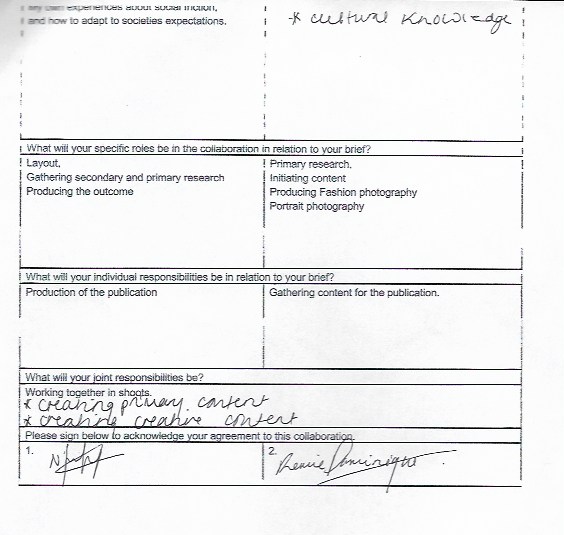








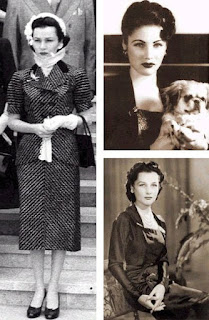














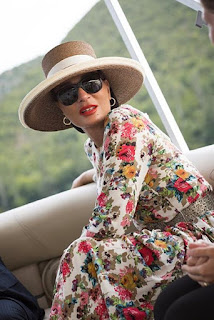













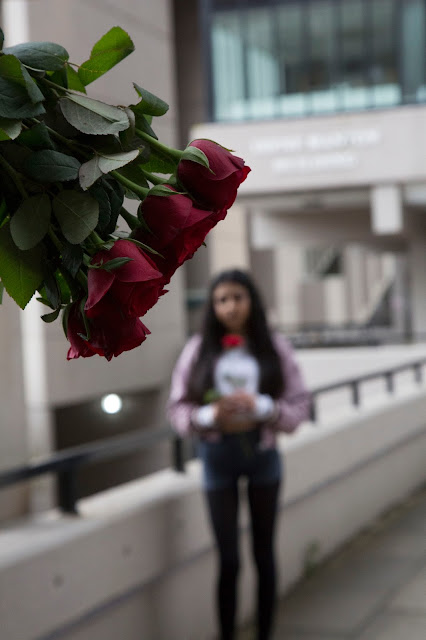
































































































































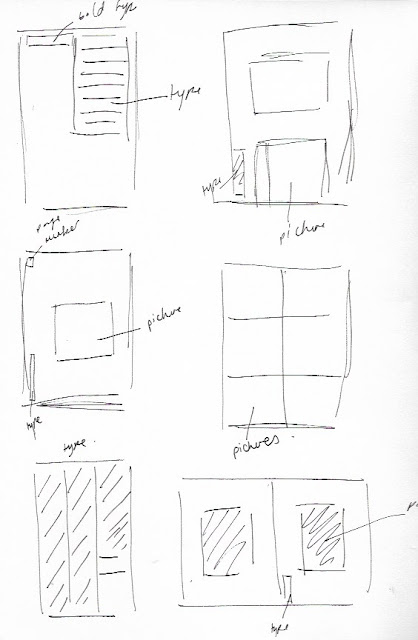



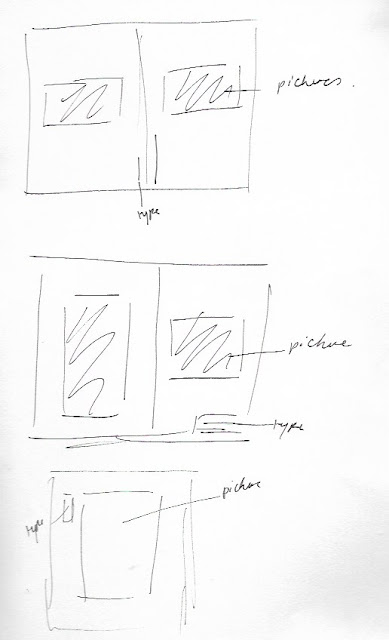
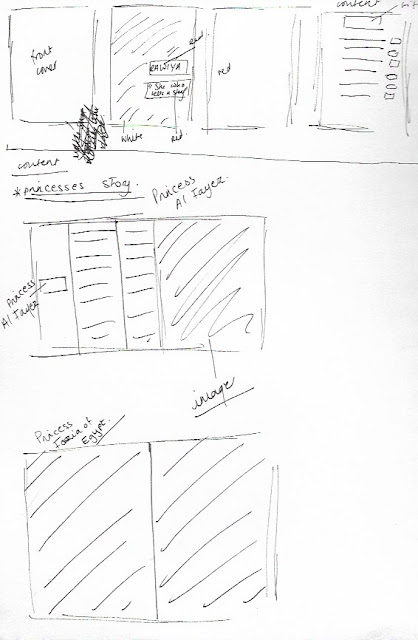
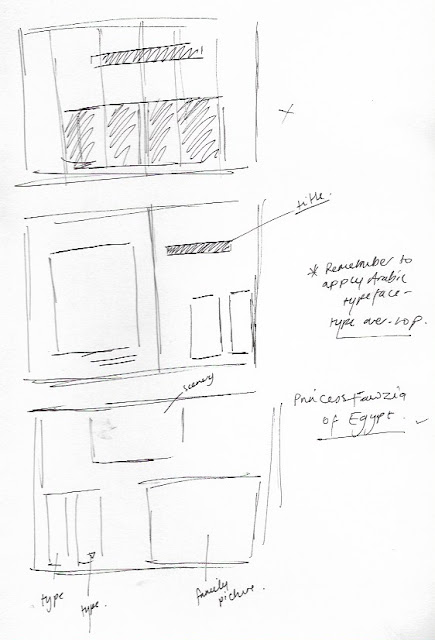


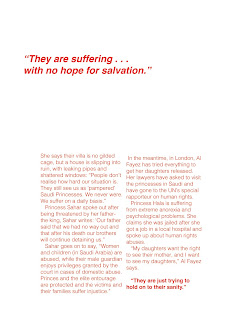




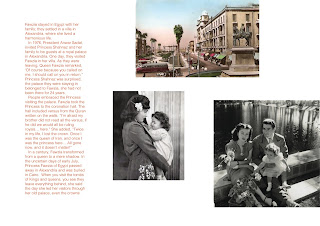


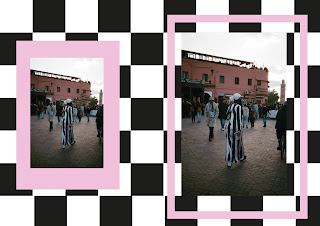
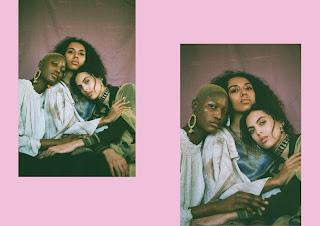
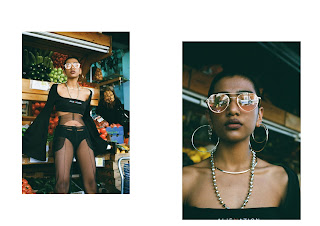













No comments:
Post a Comment